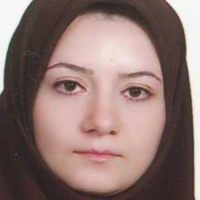Relationship between Natural Resources Types and Internal Conflict Risk in the MENAP Region Countries in the Context of the Political Resources Curse
Based on theoretical foundations and empirical studies in the field of the relationship between natural resources and internal conflict, 4 states can be imagined: a. Positive relationship between natural resources abundance and internal conflict (hypothesis of political resources curse) b. positive relationship between natural resources scarcity and internal conflict (hypothesis of political resources endowment) c. Non-linear relationship between natural resources and internal conflict (combination of state A and B) d. Absence of relationship. Based on this, the main purpose of this article is to investigate the relationship between natural resources types and internal conflict risk in the MENAP region countries during the period of 2000-2019 using the System Generalized Method of Moments (SGMM). For this purpose, the index of the percentage share of total natural resource rent from GDP and eight separate indicators including: the percentage share of oil, natural gas, coal, forest and mining rent from GDP, the percentage share of fuel export and the export of ore and metals from the export of goods and the percentage share of arable land in the total area have been used. The results show that there is a U-shaped relationship between the total rent of natural resources and the internal conflict risk; In other words, countries with a shortage of natural resources as well as countries with an abundance of natural resources have a higher internal conflict risk than other countries. This U-shaped relationship is also confirmed for oil rent and fuel export. Also, coal and forest rent have a meaningless effect and arable land has an inverted U effect on the internal conflict risk in the studied countries. The evaluation of the marginal effect of the total rent of natural resources on the internal conflict risk shows that its value varies from -0.08 to 0.1. According to the other results, per capita income and democracy have a negative and significant effect, and population and religious and racial tensions have a positive and significant effect on the internal conflict risk.
- حق عضویت دریافتی صرف حمایت از نشریات عضو و نگهداری، تکمیل و توسعه مگیران میشود.
- پرداخت حق اشتراک و دانلود مقالات اجازه بازنشر آن در سایر رسانههای چاپی و دیجیتال را به کاربر نمیدهد.



